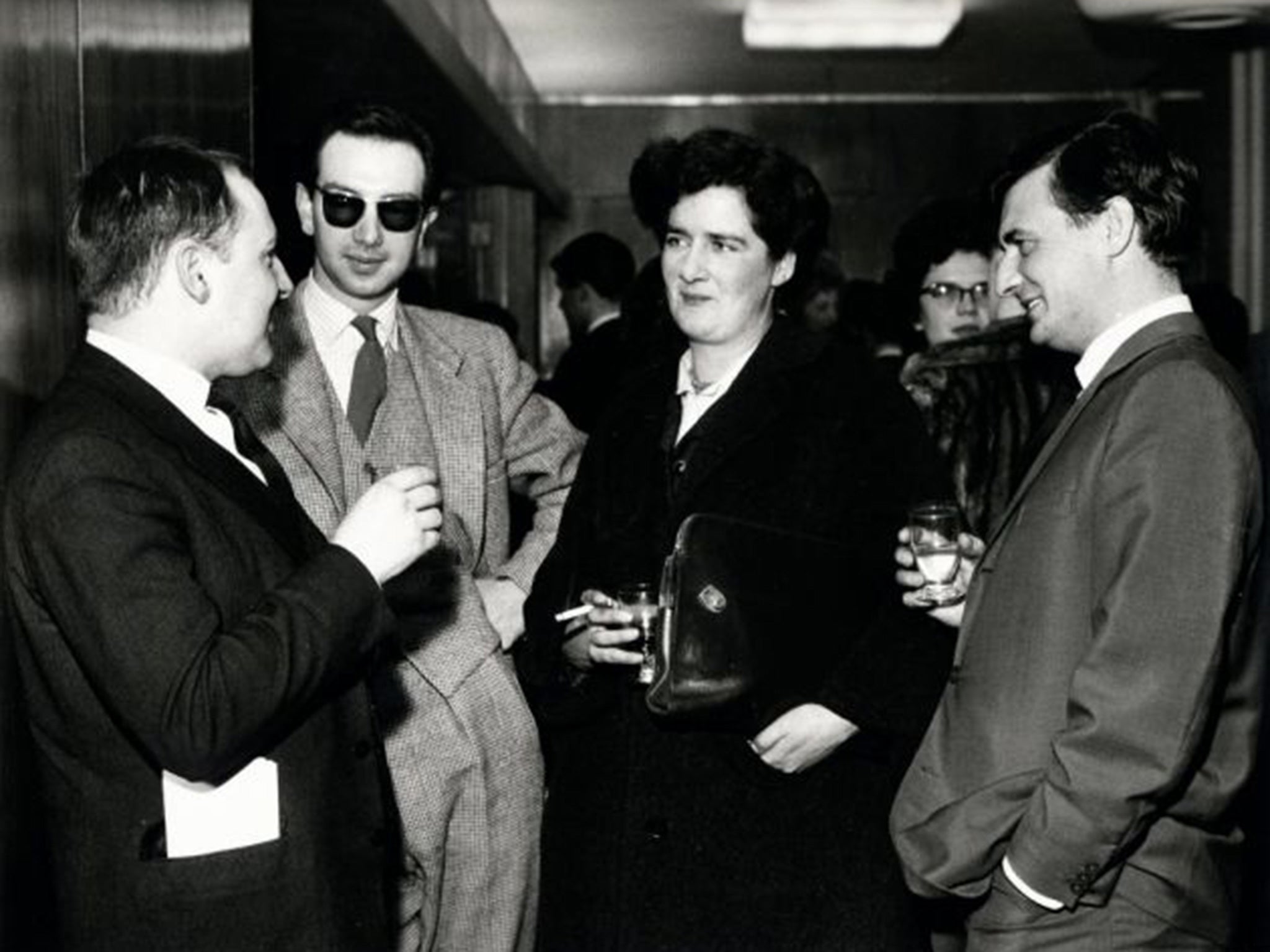Penelope Houston: Vital commentator on post-war cinema who edited ‘Sight & Sound’ film magazine for 35 years

Without the profile afforded by a regular and well-promoted spot in the popular press, radio or television, Penelope Houston was not the most widely known of film critics; yet, having edited the British Film Institute’s magazine Sight & Sound for 35 years, her influence on British cinema culture was enormous. She helped create a space where British criticism could develop and, while she did not invent the magazine’s decennial “best film” poll, it was under her that it became an international marker of film culture.
Houston was reading English at Somerville College, Oxford in 1947 when, alongside Karel Reisz, Lindsay Anderson and Gavin Lambert, she co-founded the Film Society Magazine. It quickly morphed into Sequence, which aimed to look seriously at cinema and shake up the staid post-war British film world. Anderson and Reisz were among the founders of the Free Cinema movement, a precursor to the British new wave, and Sequence published Anderson’s article “No Film Can Be Too Personal”, a line from the Free Cinema manifesto.
In 1949, Lambert took over the editorship of the BFI’s 17-year-old quarterly Sight & Sound and regularly called upon his Sequence colleagues for articles. Houston became his assistant, and when six years later Lambert decamped to Hollywood to work with Nicholas Ray, she replaced him, leaving Reisz and Anderson to oversee the last few of Sequence’s 14 issues.
Coincidentally, Houston was famed for her question “Ray or Ray?” (ie Satyajit or Nicholas: to proselytise the art-house or elucidate the popular?) But for Houston (despite engineering a Golden Lion from Venice for the Indian director’s Aparajito) it was not necessarily an either/or. She recognised that the French magazine Cahiers du Cinéma had upped the critical ante and hoped to match it, yet thought their adulation of Hitchcock and Hollywood overdone.
Their dismissal of British cinema also rankled, yet she was equally aware of how badly treated it was at home. And while she was not completely seduced by the auteurists’ view of the director as a film’s creative force, she included directors as voters in the Sight & Sound poll.
Her arguments came to a head in “The Critical Question” (Sight & Sound, 1960). There was, she felt, “plenty of reviewing and not nearly enough criticism.” And too much writing narrowly concentrated only on the film and its technical aspects; “it barely admits of experience that takes place outside the cinema.” Characteristically, she said that Alain Resnais’s Last Year in Marienbad put her in mind of an Iris Murdoch novel, supporting the opinion with a quote from The Flight from the Enchanter.
That narrowness of view was partly attributable to the fact that, unlike literary critics who could revisit books, film critics relied on a single viewing – and their visceral reactions made more considered analyses difficult. “Cinema, by this definition, means, first and foremost the visual image, and the critics’ response to the visual excitement it can communicate.” The arrival of home video and DVD, allowing multiple viewings, might seem to have corrected that; but the deaths in the same week of Houston and Philip French have left cinephiles casting around for anyone left who might be considered a great critic.
Houston was equally concerned to address a film’s moral aspect. She warned against critics who assess a film’s validity “not in relation to the society from which it draws its material, but in relation to other cinematic experiences.” Nevertheless, just as Anderson had argued for the individual personality of the film-maker, so she recognised that of the critic, who was left only with “his sensibility, his knowledge, his judgement, and his apparatus of values.”
Her book The Contemporary Cinema (1963) expanded these thoughts, considering post-war cinema’s relationship to its new audiences, technologies, industry structures and its rival (a potentially positive force, she thought), television.
She also wrote for Monthly Film Bulletin (which was later subsumed into a monthly Sight & Sound) and there were articles for The Times, The Observer and The Guardian.
Houston left Sight & Sound in 1990 and two years later the BFI published her monograph on Cavalcanti’s wartime classic Went the Day Well?. Her 1994 book Keepers of the Frame was a study of the history of film archives and the technical and cultural challenges they face.
Houston was not given to empty commentary: when Nick James, Sight & Sound’s current editor, approached her for a piece on Preston Sturges, she replied gracefully that she’d written something on the director in the 1950s and had nothing to add.
Houston’s insistence that there was more to life than sitting in darkened cinemas was embodied in her enthusiastic following of horse-racing. Having retired, she clearly thought she had had the best of it: in 2001 she said: “I wouldn’t go into film criticism now if you offered me the top job on a plate. It is so boring. Who wants to spend their days looking at special effects movies from Hollywood made for 15-year-olds?”
JOHN RILEY
Penelope Houston, film critic: born 9 September 1927; died 26 October 2015.
Subscribe to Independent Premium to bookmark this article
Want to bookmark your favourite articles and stories to read or reference later? Start your Independent Premium subscription today.

Join our commenting forum
Join thought-provoking conversations, follow other Independent readers and see their replies